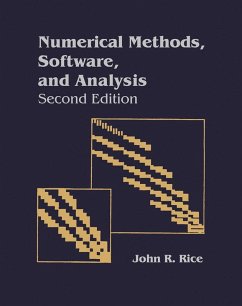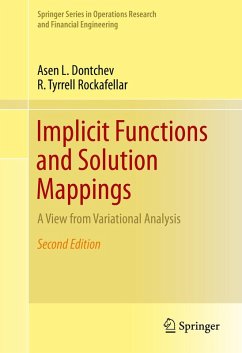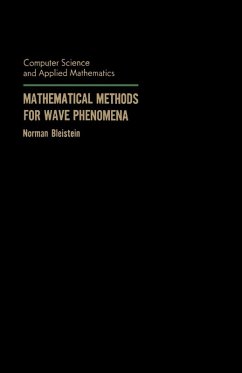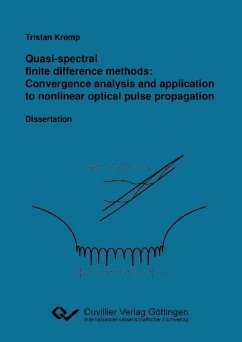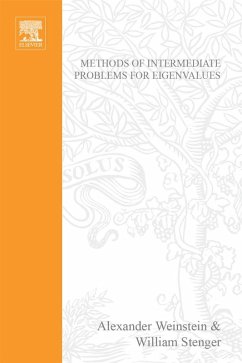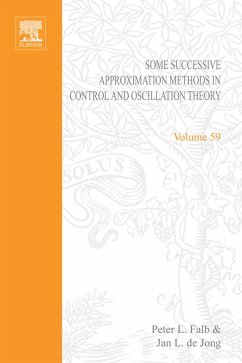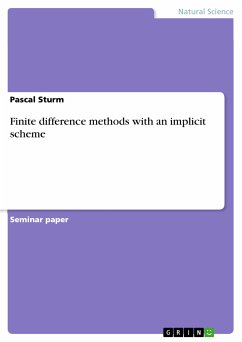
Finite difference methods with an implicit scheme (eBook, PDF)
Sofort per Download lieferbar
Statt: 17,95 €**
15,99 €
inkl. MwSt. und vom Verlag festgesetzt.
**Preis der gedruckten Ausgabe (Broschiertes Buch)
Alle Infos zum eBook verschenkenWeitere Ausgaben:

PAYBACK Punkte
0 °P sammeln!
Seminar paper from the year 2016 in the subject Mathematics - Miscellaneous, grade: 1,0, University of Tubingen, language: English, abstract: Using an explicit scheme for an application of finite difference methods may lead to stability issues. If one wants to increase the accuracy by raising the number of spatial grid points, the number of time intervals have to be increased to a certain extent in order to sustain a converging behavior. As for quite accurate results ridiculously many grid points in time are needed, the practical use of the explicit scheme is rather limited due to high computa...
Seminar paper from the year 2016 in the subject Mathematics - Miscellaneous, grade: 1,0, University of Tubingen, language: English, abstract: Using an explicit scheme for an application of finite difference methods may lead to stability issues. If one wants to increase the accuracy by raising the number of spatial grid points, the number of time intervals have to be increased to a certain extent in order to sustain a converging behavior. As for quite accurate results ridiculously many grid points in time are needed, the practical use of the explicit scheme is rather limited due to high computational effort. Implicit methods for finite difference methods are designed to overcome these stability limitations imposed by the already mentioned convergence restrictions. Since such methods are unconditionally stable, both accuracy and limited computational effort can be combined. This text offers an introductory treatment of Finite Difference Methods employing an implicit scheme. It includes a theoretical derivation of the implicit scheme and the Crank-Nicolson scheme, a numerical application to European puts as well as a theoretical discussion and comparison of the truncation error for both schemes. Finally, Richard-Extrapolation is introduced as a nice tool for lowering the truncation error.
Dieser Download kann aus rechtlichen Gründen nur mit Rechnungsadresse in A, B, BG, CY, CZ, D, DK, EW, E, FIN, F, GR, HR, H, IRL, I, LT, L, LR, M, NL, PL, P, R, S, SLO, SK ausgeliefert werden.






